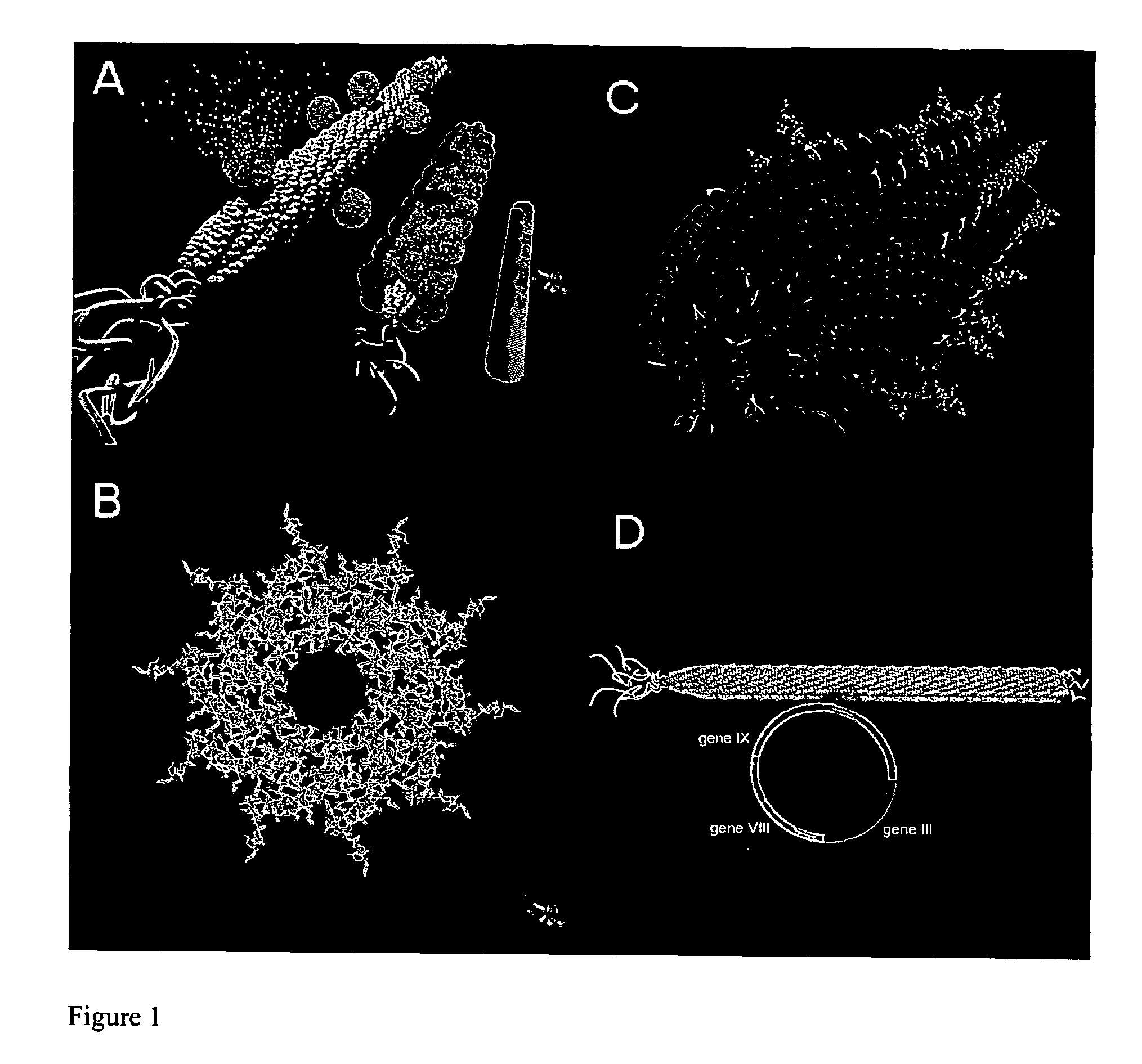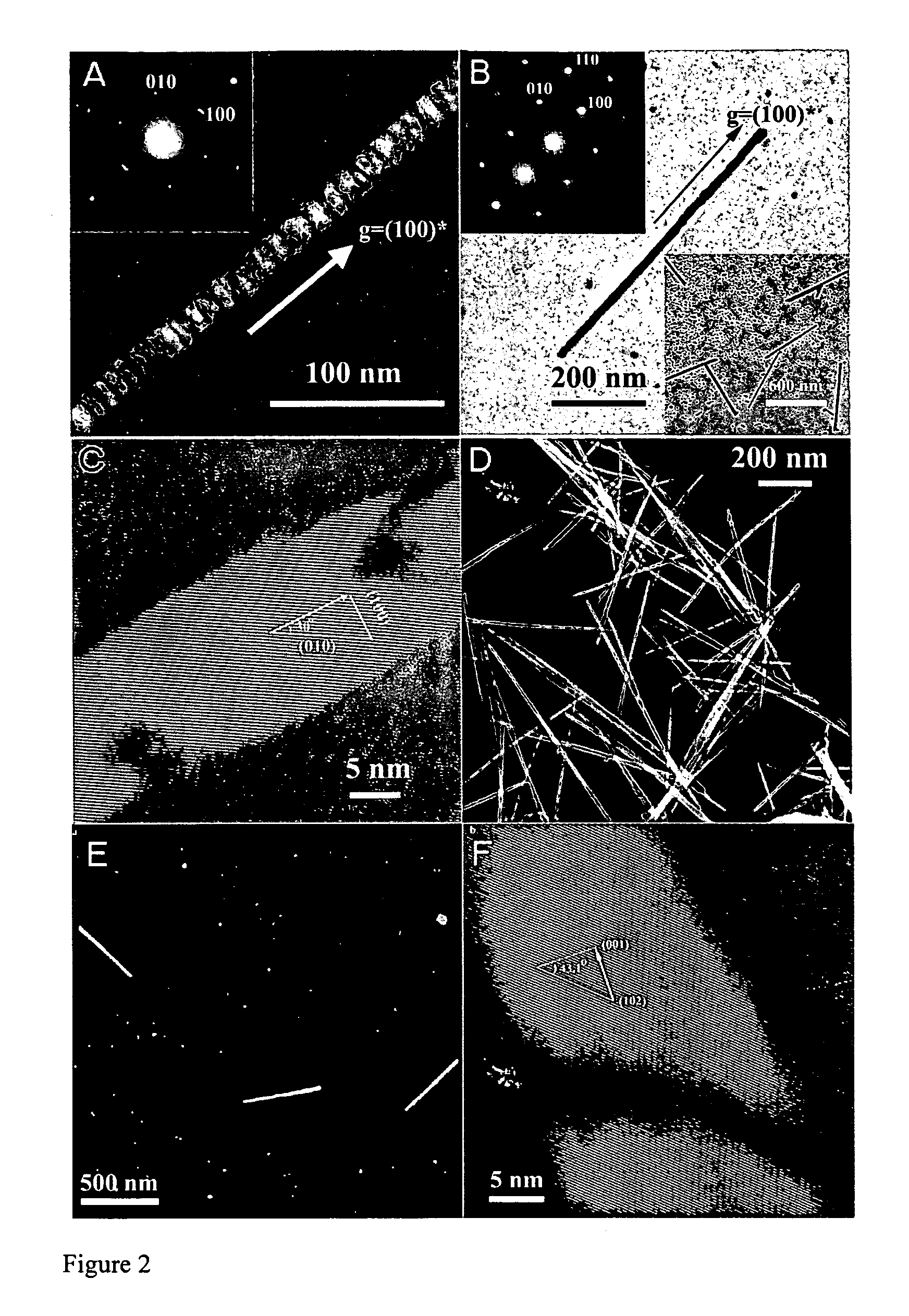Inorganic nanowires
a nanowire and organic technology, applied in the field of organic nanowires, can solve the problems of affecting the production efficiency of nanowires, affecting the quality of nanowires, and affecting the quality of nanowires, and achieve good monodispersity
- Summary
- Abstract
- Description
- Claims
- Application Information
AI Technical Summary
Benefits of technology
Problems solved by technology
Method used
Image
Examples
working examples
[0088]The present invention is further characterized by the following non-limiting working examples including FIGS. 2 and 3 and description and discussion thereof. One skilled in the art can use as guidance FIGS. 1-3 in the practice of the present invention which provide an introduction to the working examples.
[0089]FIG. 1
[0090]FIG. 1A illustrates the nanowire synthesis scheme or the nucleation, ordering and annealing of virus-particle assemblies. FIG. 1B shows the symmetry of the virus. The symmetry allows for ordering of the nucleated particles along the x,y, and z directions fulfilling requirements for aggregation based annealing. FIG. 1C shows the highly ordered nature of the M13 bacteriophage. The highly ordered nature of the self assembled M13 bacteriophage promotes the preferred orientation seen in nucleated particles through the rigidity and packing of the expressed peptides, which is visualized at 20% incorporation. FIG. 1D shows the construct of the M13 bacteriophage virus...
PUM
| Property | Measurement | Unit |
|---|---|---|
| width | aaaaa | aaaaa |
| length | aaaaa | aaaaa |
| aspect ratio | aaaaa | aaaaa |
Abstract
Description
Claims
Application Information
 Login to View More
Login to View More - R&D
- Intellectual Property
- Life Sciences
- Materials
- Tech Scout
- Unparalleled Data Quality
- Higher Quality Content
- 60% Fewer Hallucinations
Browse by: Latest US Patents, China's latest patents, Technical Efficacy Thesaurus, Application Domain, Technology Topic, Popular Technical Reports.
© 2025 PatSnap. All rights reserved.Legal|Privacy policy|Modern Slavery Act Transparency Statement|Sitemap|About US| Contact US: help@patsnap.com



